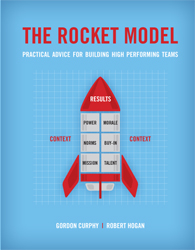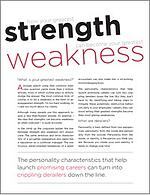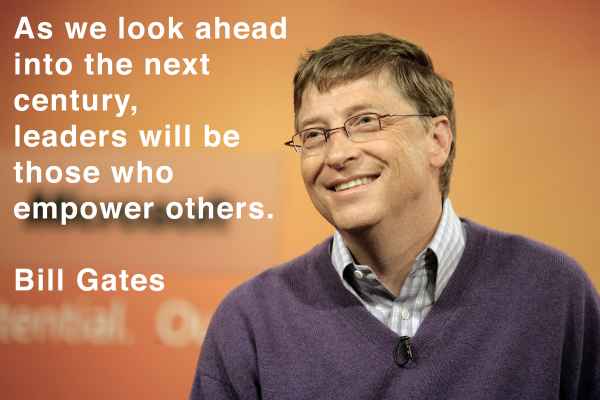 I recently listened to a “This American Life” podcast in which the host, Ira Glass, posed fundamental questions about what kids should learn in school and what really matters when it comes to success later in life.
I recently listened to a “This American Life” podcast in which the host, Ira Glass, posed fundamental questions about what kids should learn in school and what really matters when it comes to success later in life.
During the show, James Heckman (a Nobel Prize winning economist) argued that qualities other than IQ (i.e., personality characteristics) are equally important in predicting who will be successful in life and who won’t. Heckman became a huge proponent of this viewpoint, bringing together neuroscientists, economists, educators, and psychologists each year to discuss these ideas, after conducting a study that convinced him IQ wasn’t all that mattered.
In this study, Heckman looked at three groups of students:
1. Those who graduated high school
2. Those who dropped out but obtained a GED
3. Those who dropped out and did not obtain a GED.
He followed these people into adulthood for many years to see how successful they were in life. Did they land and hold jobs? How much money did they make? Did they stay out of prison? Did they divorce?
He reasoned that since the GED was equivalent to a high school diploma, those with GEDs should be as smart as high school graduates. If IQ was all that mattered, he predicted the two groups would be equally successful in life. He wasn’t sure how the drop-outs would end up since their intelligence was unknown.
Heckman found that those who had earned their GED performed slightly better than drop-outs, which isn’t too surprising. However, what did surprise Heckman was that those with GEDs didn’t achieve anywhere close to the same success as the high school graduates (in terms of earnings, job performance, college success, etc.).
The study’s findings led Heckman to conclude that cognitive skills, (i.e., IQ) are only one piece of the puzzle. Scores on standardized tests like the GED and ACT that measure IQ can only explain a small fraction of whether or not someone is successful. Other “non-cognitive skills,” like personality characteristics, play a large part in predicting success both personally and professionally.
His conclusion makes sense when you think about it. How resilient or tenacious you are, how you relate to and communicate with others, or how goal-oriented and organized you are should influence how well you do in life. As Dr. Hogan once quoted in the blog, “Character is fate.”



 Not too long ago I was on a plane heading to another Hogan Road Show. I happened to be sitting next to an HR executive from a Fortune 50 company that is a Hogan client. She was embarking on a long journey to several company locations around the world to audit the use of psychometric assessments in their organization. As I explained in
Not too long ago I was on a plane heading to another Hogan Road Show. I happened to be sitting next to an HR executive from a Fortune 50 company that is a Hogan client. She was embarking on a long journey to several company locations around the world to audit the use of psychometric assessments in their organization. As I explained in  Results are the what of teamwork, whereas the seven components of the Rocket Model© are the how of teamwork. The relationship between Results and the components of the Rocket Model© is not perfect—some teams do well when they shouldn’t and vice versa. For example, a team may be dysfunctional but have great products or face weak competitors. Such teams, however, will fail when faced with strong competition. Other teams may lose even though they do everything right. Still others may achieve poor Results due to a single, underperforming component of the Rocket Model© (e.g. a team killer, the lack of resources, or poor accountability may prevent a team from winning). We believe that teams need to have at least moderate scores on all seven components of the Rocket Model© if they are to compete successfully.
Results are the what of teamwork, whereas the seven components of the Rocket Model© are the how of teamwork. The relationship between Results and the components of the Rocket Model© is not perfect—some teams do well when they shouldn’t and vice versa. For example, a team may be dysfunctional but have great products or face weak competitors. Such teams, however, will fail when faced with strong competition. Other teams may lose even though they do everything right. Still others may achieve poor Results due to a single, underperforming component of the Rocket Model© (e.g. a team killer, the lack of resources, or poor accountability may prevent a team from winning). We believe that teams need to have at least moderate scores on all seven components of the Rocket Model© if they are to compete successfully. Results are the what of teamwork, whereas the seven components of the Rocket Model© are the how of teamwork. The relationship between Results and the components of the Rocket Model© is not perfect—some teams do well when they shouldn’t and vice versa. For example, a team may be dysfunctional but have great products or face weak competitors. Such teams, however, will fail when faced with strong competition. Other teams may lose even though they do everything right. Still others may achieve poor Results due to a single, underperforming component of the Rocket Model© (e.g. a team killer, the lack of resources, or poor accountability may prevent a team from winning). We believe that teams need to have at least moderate scores on all seven components of the Rocket Model© if they are to compete successfully.
Results are the what of teamwork, whereas the seven components of the Rocket Model© are the how of teamwork. The relationship between Results and the components of the Rocket Model© is not perfect—some teams do well when they shouldn’t and vice versa. For example, a team may be dysfunctional but have great products or face weak competitors. Such teams, however, will fail when faced with strong competition. Other teams may lose even though they do everything right. Still others may achieve poor Results due to a single, underperforming component of the Rocket Model© (e.g. a team killer, the lack of resources, or poor accountability may prevent a team from winning). We believe that teams need to have at least moderate scores on all seven components of the Rocket Model© if they are to compete successfully. “What is your greatest weakness?”
“What is your greatest weakness?” “What is your greatest weakness?”
“What is your greatest weakness?”

